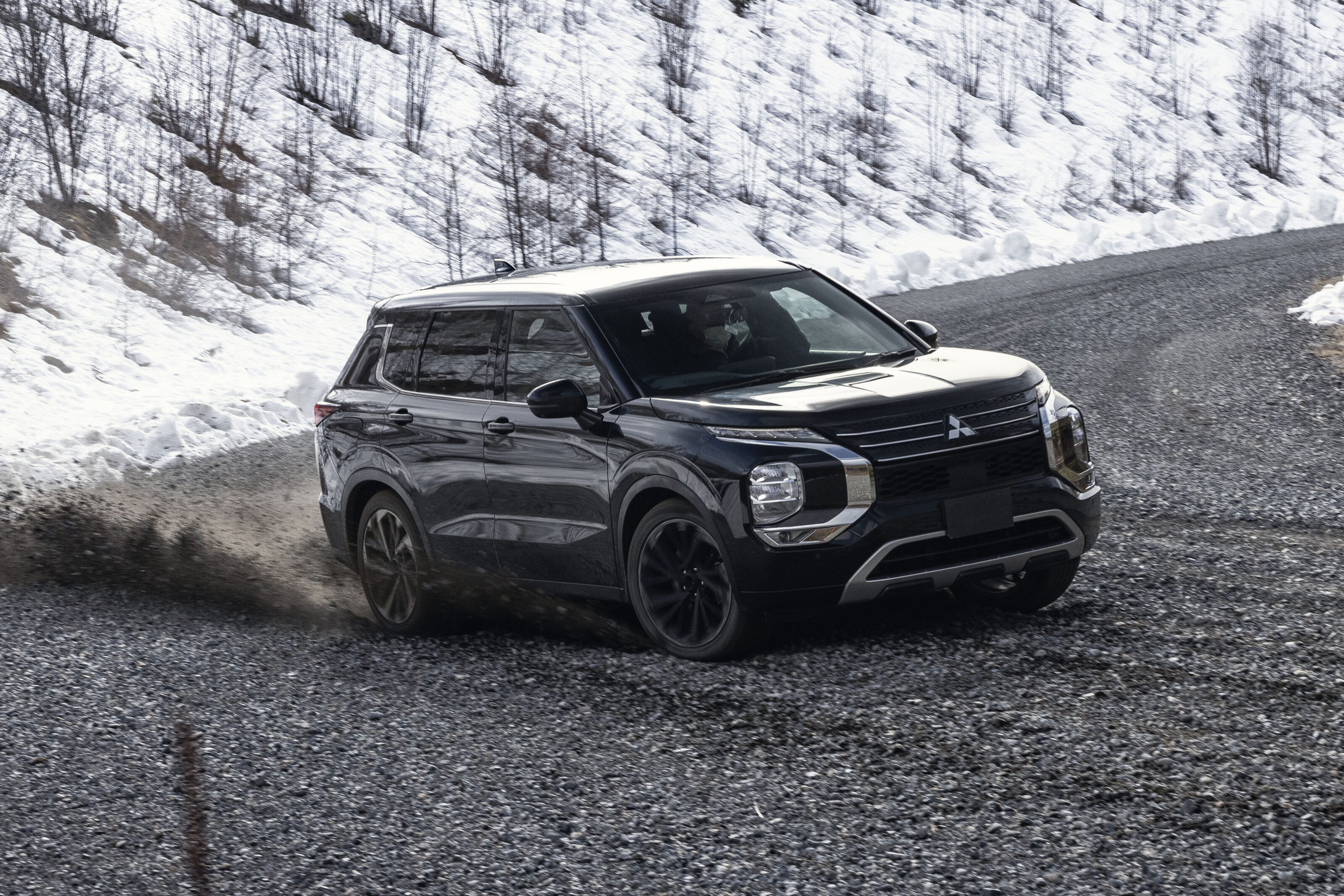Mitsubishi’s new Outlander PHEV is already on sale – but here’s everything that went into it
Jetting to Japan from Australia, a half-hour bus ride along Hokkaido’s snow-lined roads finally brings us to Mitsubishi’s Tokachi proving ground.
Completed in 1996, the 1000-hectare facility features all manner of car-busting tracks to test new vehicles to their limits. Like all good proving grounds, there’s an aura surrounding Tokachi – its trees have seen a great many prototypes (and probably crashes) over the years. If only they could talk.
A trio of Outlander plug-in hybrids greets us at the gate, as we’re here for less secret reasons. The red-and-white PHEVs look unassuming, but the third Outlander appears to have mismatched wheels; a closer inspection reveals the same 21-inch alloys that’ve been subjected to enough gravel rash to knock all the black paint free from the faces.
“This is the gravel development car.” No kidding.
You can see the array of mud flaps underneath that protect the exhaust (without the rubber it would get too dented), and the absolute havoc the rocks have wreaked on the Outlander’s underbelly.
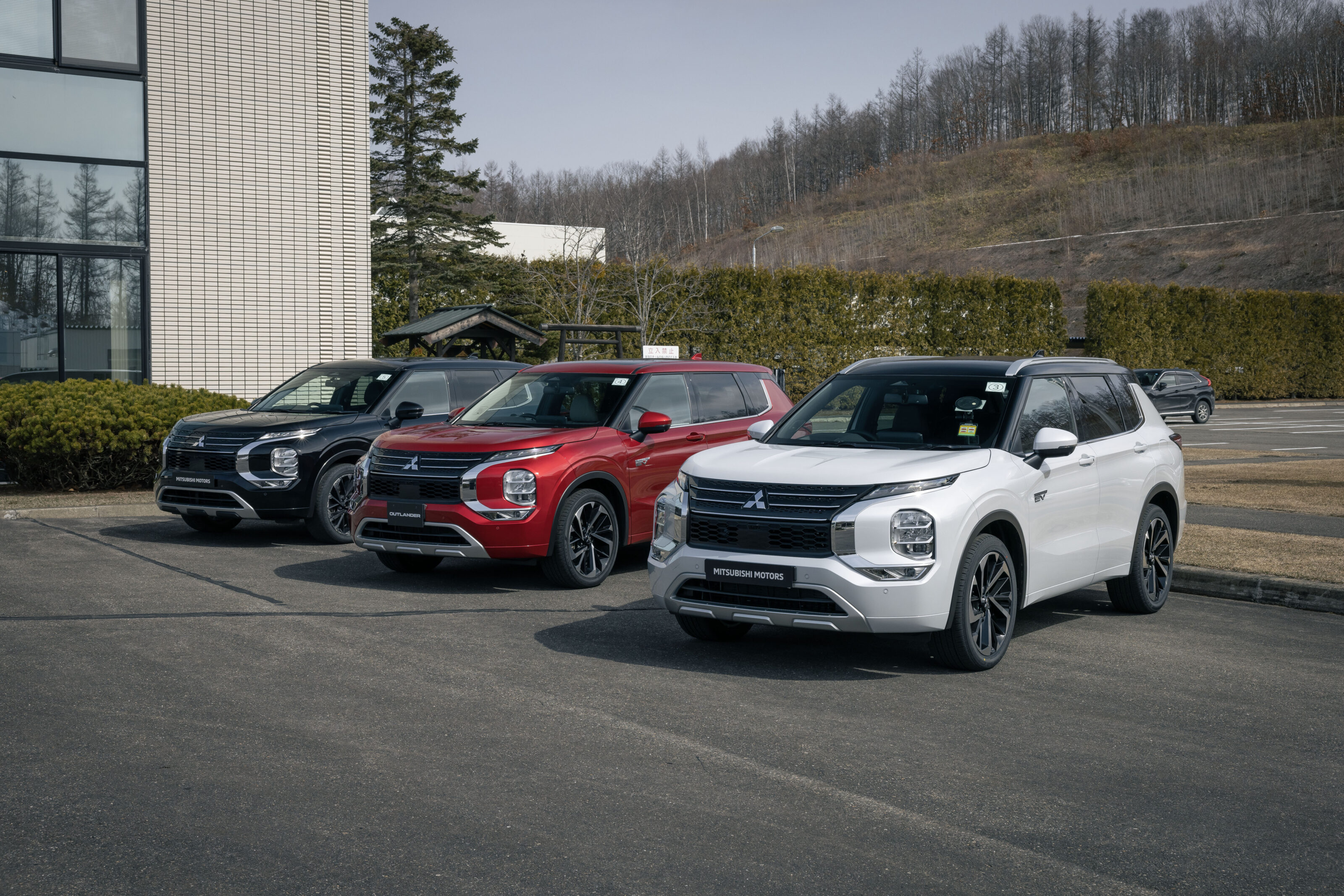
The real surprise comes inside, where the Outlander Exceed Tourer’s plastics are smooth and ungrained, and the digital driver’s display reads an absurd 286,000 miles – or 457,000km. To put that into perspective, it would take an average Australian 35 years to rack up that mileage, and Mitsubishi reckons this Outlander is still on its original dampers and suspension bushings.
Another, more consumer-relevant quirk is the second-row captain’s chair arrangement, which would make a worthy addition to the Aussie market, we reckon.
It’s rare for a car company to give journalists a peak behind the curtain at what went into developing a car. Usually, mules like this are discarded, or at least hidden from view. But the car we drove has likely been instrumental in influencing the direction the future tri-motor Outlander Ralliart will take.
The digital driver’s display reads an absurd 457,000km – it would take an average Australian 35 years to rack up that mileage
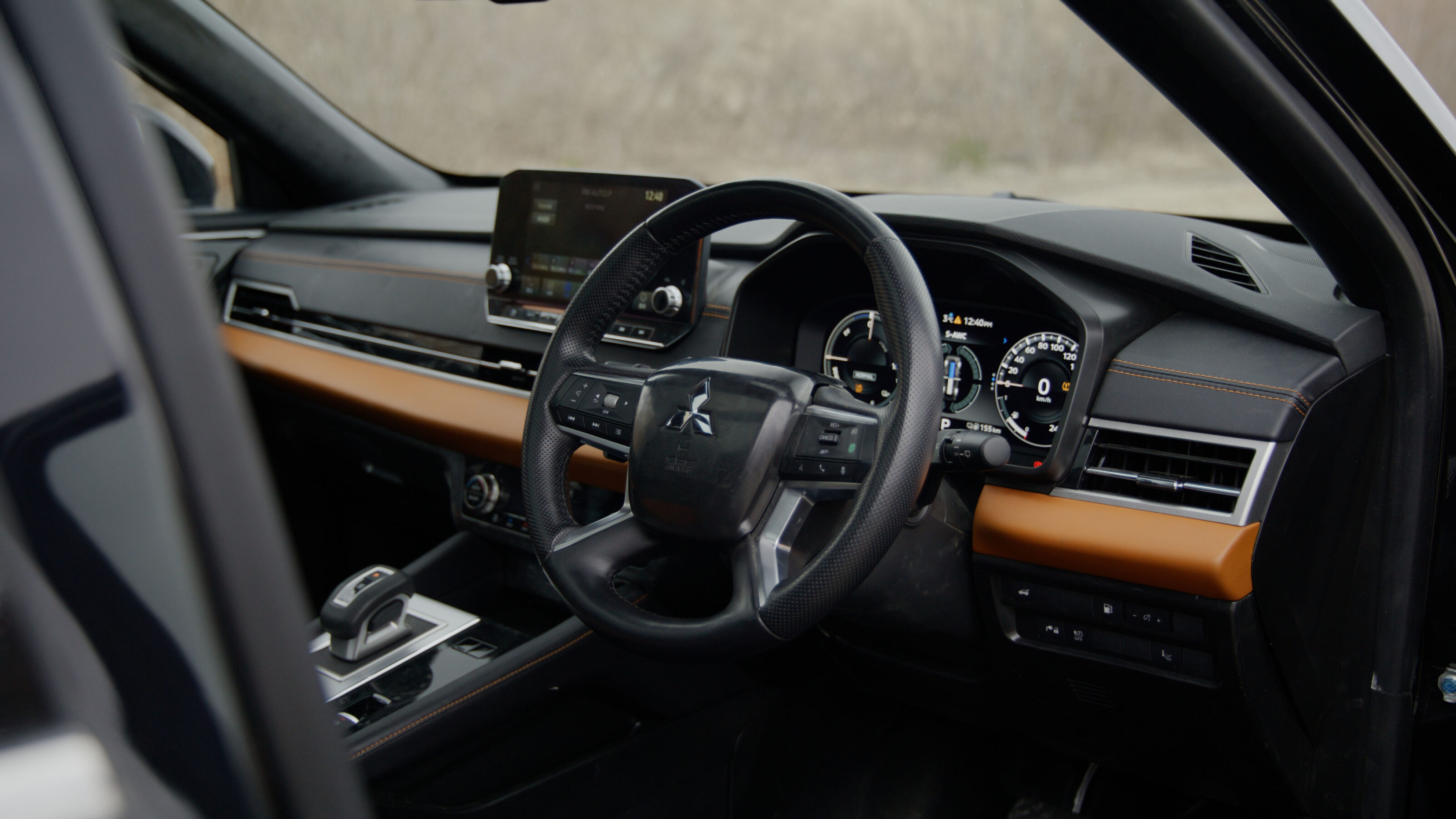
Following a safety induction and briefing on the day’s activities, I’m first up in the prototype. We follow development driver Atsuro Hirayama – in one of two Final Edition Lancer Evolution Xs that casually hang around the proving ground – onto the 10km high-speed bowl.
“Stop, and then give it full acceleration,” crackles the radio from the centre console.
V-Maxing a 185kW/450Nm Outlander plug-in hybrid doesn’t sound particularly intimidating (it’s only 180km/h, after all) but in the battered-up mule, things aren’t exactly serene.
All those kays on rocks and dirt have definitely left some weight lodged in the rims, and probably some buckles too. These become apparent between 120-130km/h as the Outlander tries to shake itself to pieces. Not wanting to drop back from the lead trio, I keep my foot in, hoping it will improve. As we approached the 180km/h top speed, it does indeed, and the worst of the wobbles subside.
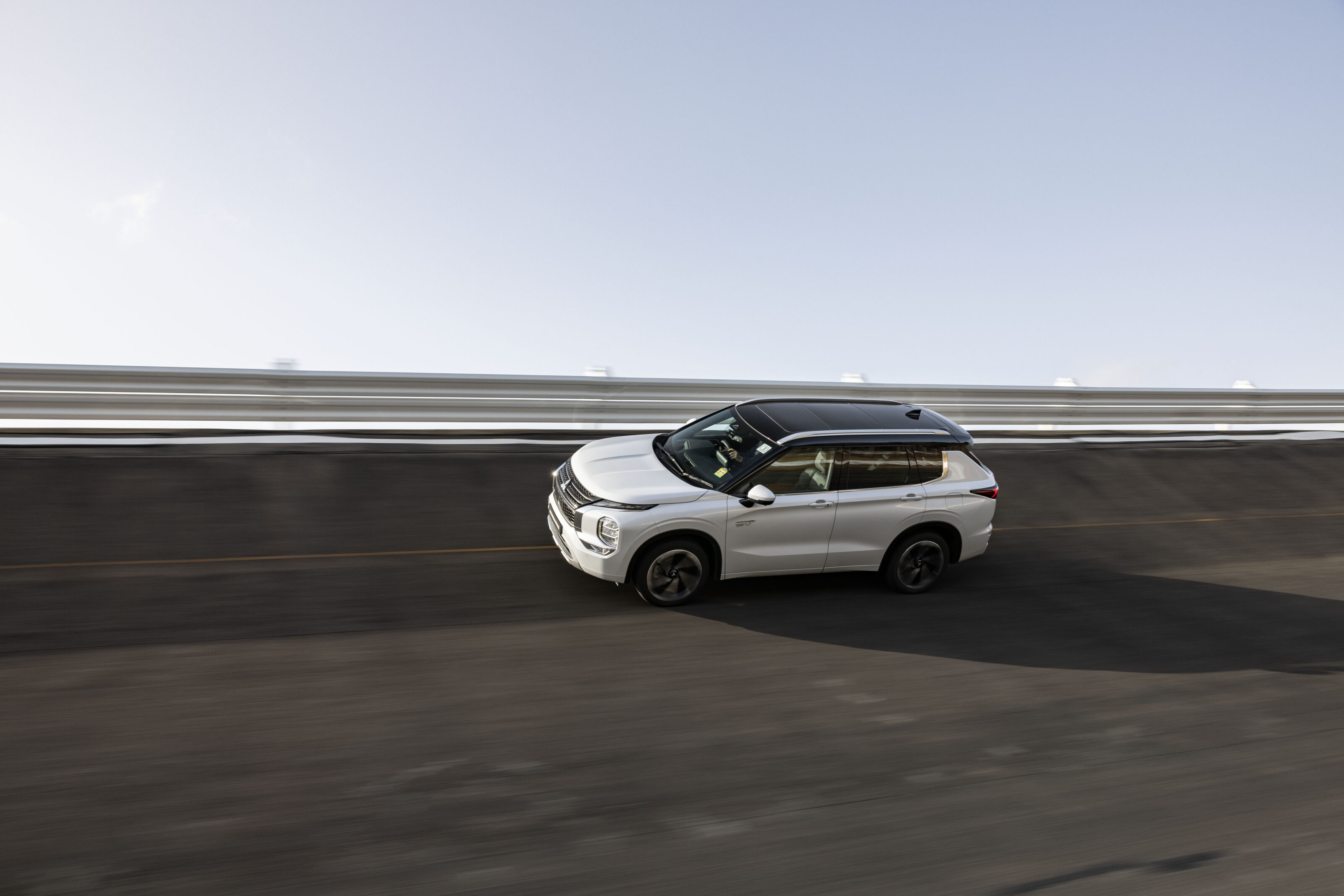
None of this is hugely relaxing, of course. Sunroof rattling and computer chiming a calm but insistent alert at the disconnected tyre pressure monitoring, broken headlights and phantom unbuckled belts – but that’s all part of the fun.
Next on the list is another tarmac activity, a motorkhana of sorts, tracing the Outlander plug-ins through a series of cones to test the ABS, ESC, power delivery, and on-limit handling.
Threading a two-tonne electrified SUV through some cones may sound a chore, but the Outlander’s party piece is the way it disguises its 2110kg kerb weight.
Light steering and an alert front end are eager to dive into corners, and the instant torque from the rear 100kW/195Nm electric motor shoots the Outlander toward the next cone. Overwhelm the front tyres (it’s not a hard task) and you’ll get a lot of understeer, but be gentle and you can have fun.
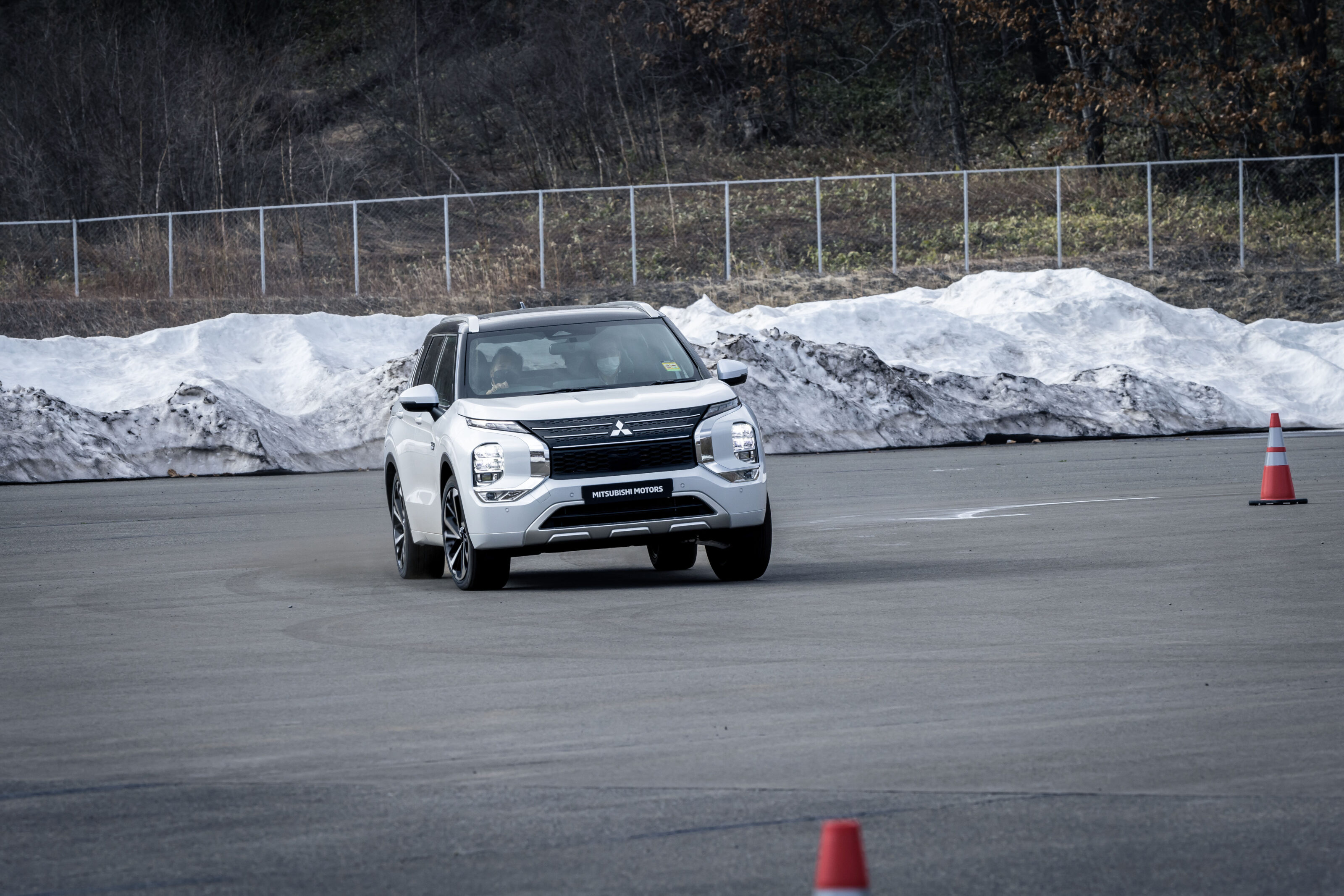
Of the three cars on hand, the black development is definitely the most expressive. A well-timed left-foot brake on turn-in sends the rear wide and – providing you stay smooth with the inputs – holds the intentional yaw for a second, showing the depth of Mitsubishi’s ESC calibration. Of the seven drive modes, Tarmac is the most natural, while Power alarmingly fast – and Gravel/Snow the most fun.
At the end of the Motorkhana, a low-friction surface awaits us. With all four wheels, this simulates driving on ice, and it’s astounding how effective Snow mode makes the traction control. Next, we’re encouraged to drive with one wheel on the slippery, and the other on normal tarmac to test the ABS calibration.
Tokachi’s smooth tarmac test circuit also highlights how Mitsubishi arrived at the Outlander’s suspension tune. The car is great over all the bumps constructed here – no surprises – but even this advanced proving ground has no simulation of Australia’s scabby and potholed tarmac.
What we’re really here for is what this car’s been doing for most of its life – slithering around the hilly, off-camber gravel circuit.

We start in normal mode, Hirayama-san encouraging deference to the tricky course, and I can see why. The first descent is steep and the surface unforgiving. Initially, Outlander’s ESC and traction control work tirelessly to limit slip.
The second lap time is about Gravel mode. With traction control off (but ESC left alone), I’m encouraged to push a little harder. There’s a fluidity to the Outlander on gravel not evident on tarmac; the trick is to stay smooth on the steering inputs and use the brakes to guide the SUV around.
By the third lap, sliding has become second nature, with Gravel mode allowing smooth and predictable four-wheel slides without ESC intervention. Only when you really get it wrong (or are too aggressive) do the nannies cut in. Add to that the instant torque from the Outlander’s rear motor and the clever single-speed transaxle front transmission, and the amount of confidence I find in this two-tonne SUV is really astonishing.
To finish the day, Hirayama-san takes us out for a hot lap – and hot it is. He enters the corners fully crossed up, at one point tagging a mid-corner bump that feels like it’ll rip the standard 255/45R21 Bridgestone Ecopia off the rim (it didn’t). It didn’t take long for the unmistakable smell of cooked brake pad to waft through the crisp mountain air – and he did all this with his massage seats on.
Hirayama-san is no average joe. His driving career started in the Japanese Gymkhana championship where he piloted a Mirage Asti coupe race car, with its 1.8-litre engine bored and stroked to 2.0 litres.
He then transitioned to drifting, owning three generations of Nissan Silvia – S13, S14, and S15 – chewing through four SR20s and three transmissions along the way.
He currently works on the Outlander (presumably with ties to the coming Ralliart version), next-gen Pajero Sport and Triton ute, as well as some of Mitsubishi’s Kei cars as a development driver. His personal car is a Rover K Series-powered series-2 Lotus Elise. A died-in-the-wool petrolhead, then.
It’s this kind of passionate employee, a largely unknown and unsung development driver, that can inject even the most mundane cars with a bit of character. Hirayama is just one Mitsubishi employee, but there are many more enthusiasts just like him in the fold. We have high hopes for the future of Ralliart.
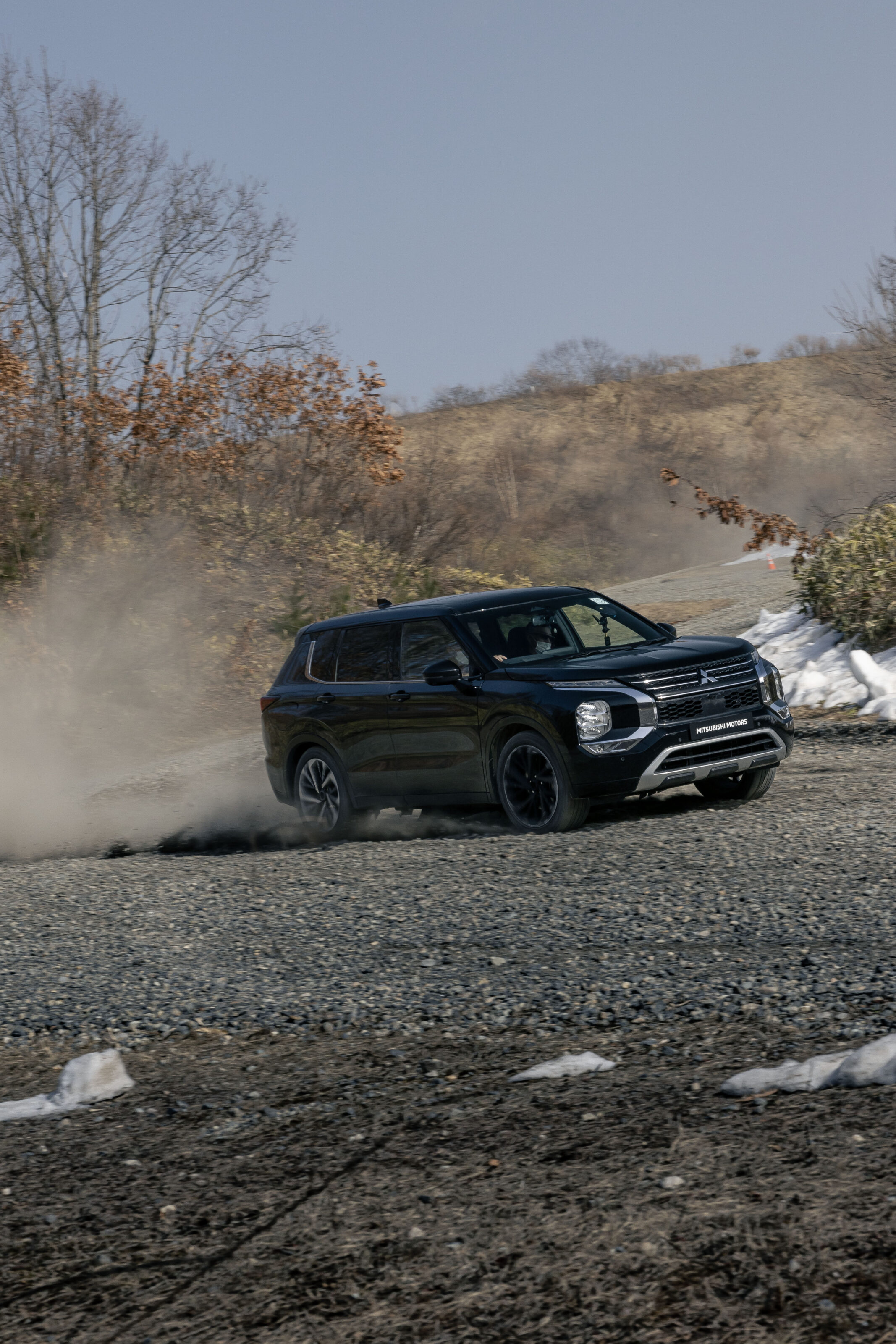
What did we learn by sliding around a Mitsubishi Outlander that’s effectively traveled to the moon and halfway back?
We learned this family SUV has been tested to within an inch of its life, and it’s a pleasure to be able to celebrate a gladiator of vehicle development.
The exercises also confirmed something about Mitsubishi’s products: although the Outlander and Triton might have somewhat firm and clumsy low-speed suspension tunes, there’s a depth of quality engineering and toughness not evident in up-start Chinese rivals.
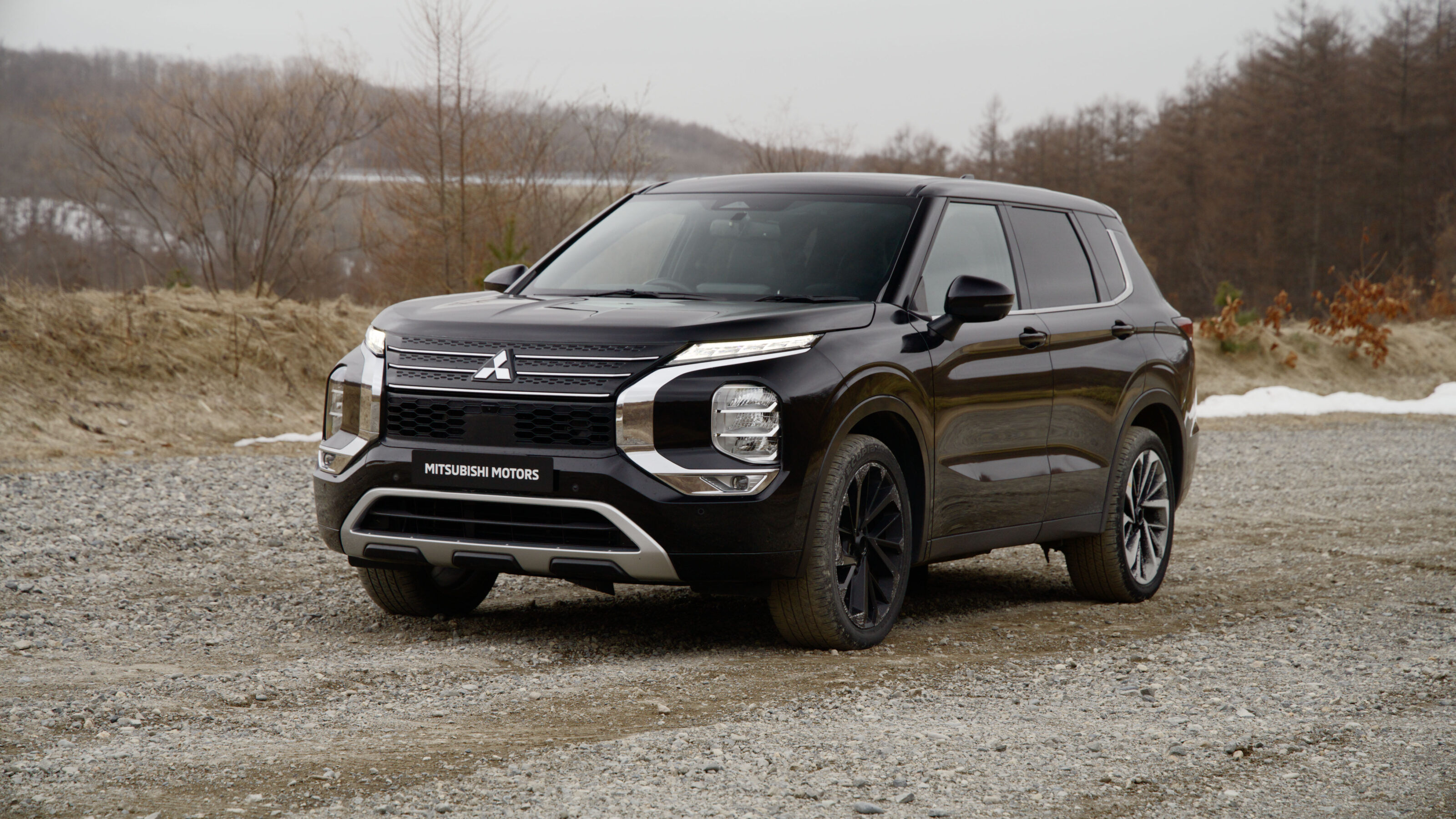
Does knowing what’s behind Mitsubishi’s test regime somehow make the Outlander plug-in hybrid the best medium SUV? Not quite. But I have come away from Japan with a new-found appreciation for the capability of Mitsubishi’s plug-in powertrain, all-wheel drive system, and dedication to vehicle testing.
Even in such an everyday family vehicle, the S-AWC system is rather special. One can only imagine how an extra 100kW, 200Nm, and performance-tuned air suspension would feel in an Outlander Ralliart.
We recommend
-
 News
NewsMitsubishi previews future: New Triton & Pajero Sport, 7-seat Kluger rival, electric ute confirmed!
Mitsubishi claims it will launch 16 new vehicles – nine hybrid and electric – over the next five years, with more Alliance support in growth markets
-
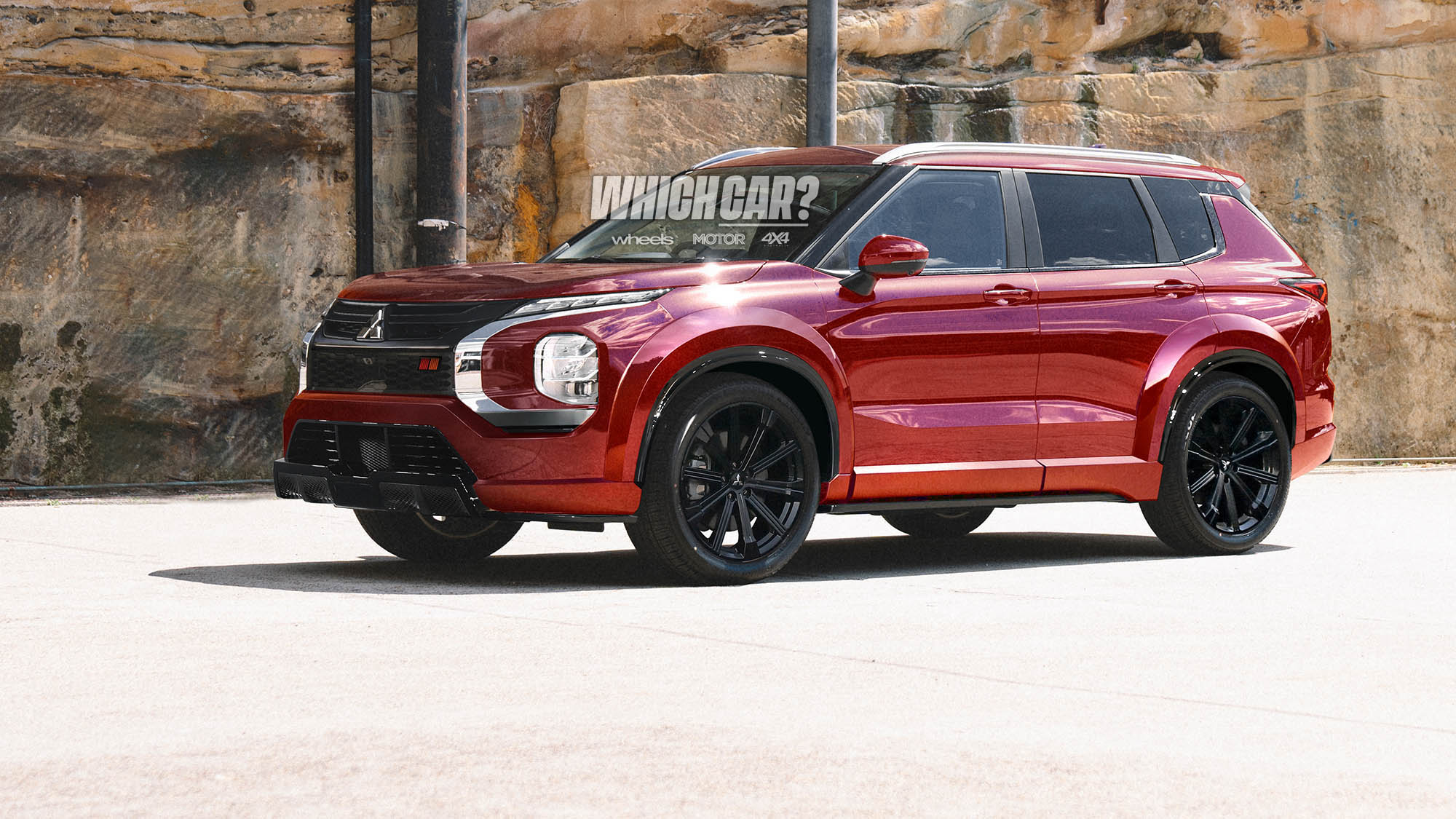 News
NewsExclusive: Mitsubishi’s Outlander Ralliart will be an all-terrain monster
Mitsubishi’s Ralliart resurrection will result in an all-conquering, “Almighty” performance SUV with all-terrrain grip, air suspension, and triple-motor electric drive.
-
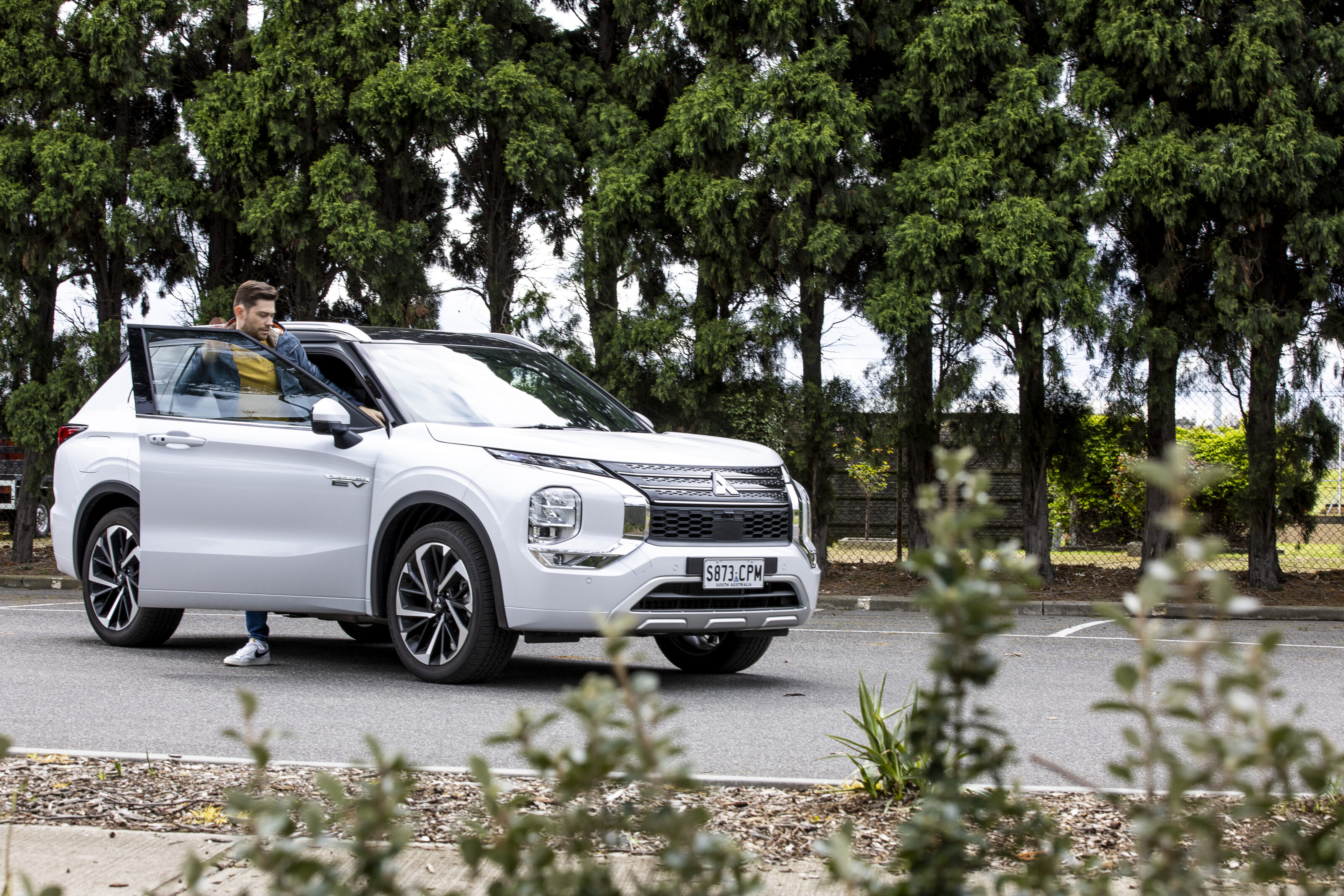 Reviews
ReviewsLong-term review: New Mitsubishi Outlander PHEV
Is the new Outlander PHEV worth $16K more than its petrol equivalent? We add the world's most popular plug-in hybrid to our long-term fleet to find out


